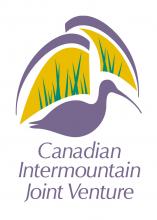
Conservation partners worked together to conserve critical site on the Pacific Flyway
By Jessica Shea
Visiting the eastern shoreline of Columbia Lake in British Columbia is a special experience, according to the Nature Conservancy of Canada’s Hillary Page. After walking along the lakeshore’s wetland, you’ll pass through an old-growth Douglas fir forest, which opens up into a fallow hay field. From there, you look south to the headlands of the Columbia River or north to hoodoos, ancient exposed bluffs of sandstone created by erosion.
Nature Conservancy of Canada’s (NCC) name for this tract of land, Columbia Lake—Lot 48, is a modest designation for a place at the headwaters of the largest river in North America’s Pacific Northwest. “Everytime I go there I can’t help being blown away by the wildlife and diversity,” Page says. The area’s wetlands and associated habitats are a key part of the Pacific Flyway, a waterfowl migration route which stretches from nesting areas on the Arctic Ocean to wintering grounds in South America. The Pacific Flyway is used by a variety of ducks, like cinnamon teal and hooded merganser.
Apart from the waterfowl, elk, badger, and bighorn sheep that inhabit the varied landscape, a more fearsome creature is said to have lived in the area. The creation story of the indigenous people of the K’tunaxa Nation says a monster once roamed the area and the hoodoos are the remains of its ribs.
The modern-day risk to the habitat and the animals that live, feed, and breed in this region is development. “The area was slated to become a resort,” Page explains. “Most of the surrounding area was already in conservation. This was the last piece of the puzzle to have all the land around the Columbia headlands conserved.”
Partners, including NCC, worked for decades to reach a win-win solution for both the landowner and conservation efforts. NCC purchased the land with help from a grant from the North American Wetlands Conservation Act (NAWCA).
“Conservation is a slow process,” Page says. “It’s all about building relationships. For NCC, the key ingredient is having people rooted in communities where we work, people who are able to speak knowledgeably about community concerns.”
Conservation work doesn’t stop with acquiring land. NCC continues to use NAWCA funding for land stewardship, including property inspections, access management, and preventative invasive species work. The biggest current threat to the land is invasive knapweed, which outcompetes the native grasses that bighorn sheep and elk eat.
Acquiring and conserving more than 18,500 acres around the Columbia headlands relied in part on grants from the North American Wetlands Conservation Act (NAWCA), which has provided funding for wetland habitat preservation projects in the U.S., Canada, and Mexico since 1989. The protection is especially important since the land falls within a continentally significant area for waterfowl as designated by the 2012 North American Waterfowl Management Plan revision.
Over the past 30 years, NAWCA has grown into one of the most significant conservation programs in history. More than 3,000 NAWCA-funded projects have conserved 30 million acres of wetlands and related habitats. The projects span nearly every state, territory, and province in Canada, the U.S., and Mexico. The goal of the multi-billion dollar grant program is to guarantee waterfowl and other wetland-dependant species a diversity of habitats across the continent, from breeding to wintering grounds, in perpetuity.
NAWCA-funded projects across Canada, the U.S., and Mexico have improved birdwatching, hunting, fishing, and other outdoor recreation opportunities on public lands. Habitats conserved through NAWCA projects have far reaching impacts. For example, the conserved wetlands store water and recharge aquifers, which helps secure future water supplies. Healthy wetlands also improve water quality by removing phosphates, nitrogen, and pesticides. When wetlands are restored to their natural states, they help prevent soil erosion during floods.
“There is currently a shift toward a broader vision of what constitutes conservation, for example allowing for land use that is compatible with conservation, like sustainable grazing,” Page says. “Another shift is greater protection for areas of cultural importance for indigenous people. I think the only way we’ll get to where we need to be regarding conservation is by continuing these shifts.”
At the Columbia River headwaters the conservation puzzle is complete. Waterfowl, animals, and people will continue to enjoy its diverse habitats in perpetuity.
